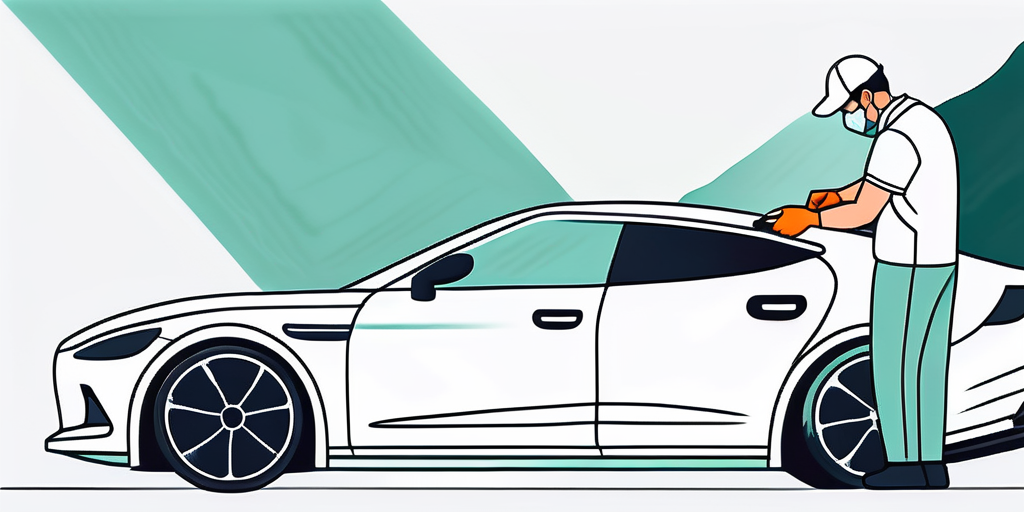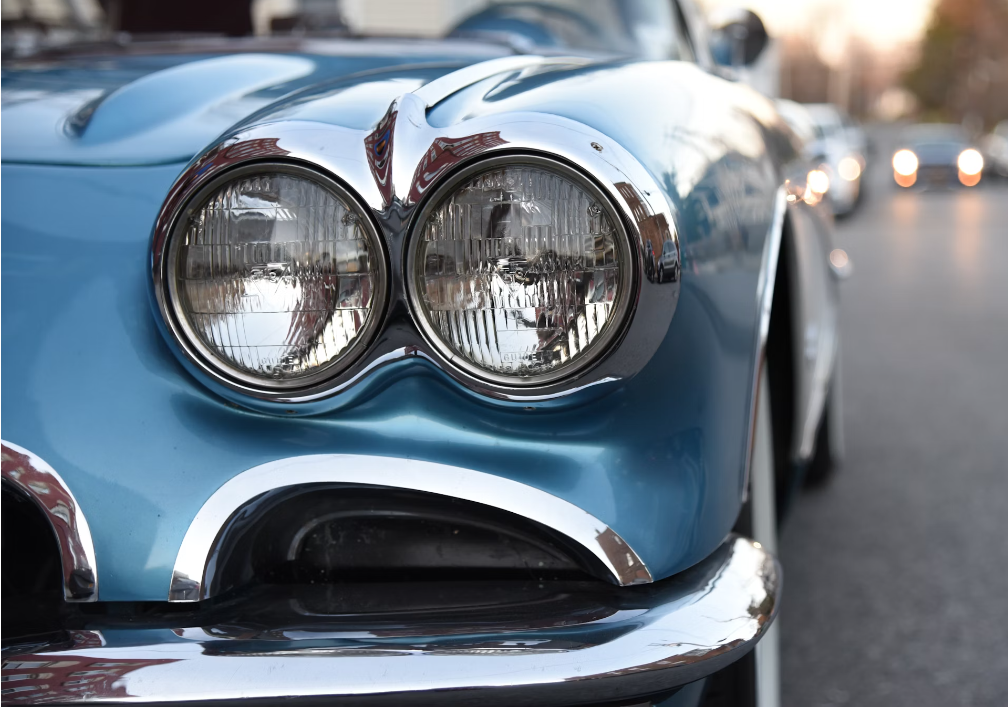What is Ceramic Coating? Explained by AvalonKing
Ceramic coating, also known as nano-ceramic coating, is a revolutionary innovation in the world of car detailing. It serves as a protective layer for your car's paintwork, shielding it from various forms of damage including UV rays, scratches, chemical stains, and even graffiti. This glossary entry will delve into the intricacies of ceramic coating, its benefits, application process, and more.
As a car owner, you might have heard about ceramic coating in passing or read about it online. But what exactly is it? How does it work? And why is it considered a game-changer in the realm of car detailing? This glossary entry aims to answer all these questions and more, providing you with a comprehensive understanding of ceramic coating.
Understanding Ceramic Coating
Ceramic coating is a liquid polymer that is applied by hand to the exterior of a vehicle. It chemically bonds with the vehicle's factory paint, creating a layer of protection. Once cured, this coating can last for years, providing a strong, protective surface that can withstand a variety of environmental damages.

The term 'ceramic' in ceramic coating comes from the use of nanotechnology, where tiny particles form a very fine, thin layer completely invisible to the eye. Because these particles are so small, when applied to a surface, they seal all the pores making the surface hydrophobic (water-repellent), resistant to UV, scratches, chemicals, and extreme heat.
The Science Behind Ceramic Coating
At its core, ceramic coating is a chemical solution that reacts with your car's paint to form a new layer of protection. This reaction is facilitated by the nano-ceramic technology within the coating, which allows it to fill in the microscopic imperfections found on the surface of your car's paint.
Once the ceramic coating has bonded with your car's paint, it creates a semi-permanent or permanent bond that does not wash away or break down and does not require repeated application every few months. This makes ceramic coating a long-term investment in the protection of your car's exterior.
Types of Ceramic Coating
There are several types of ceramic coatings available in the market, each offering different levels of protection and longevity. These include quartz, hybrid, and titanium coatings. Quartz coatings provide the highest level of hardness and durability, while hybrid coatings offer a balance between hardness and flexibility. Titanium coatings, on the other hand, are known for their high gloss finish.
Choosing the right type of ceramic coating for your car depends on various factors such as your budget, the level of protection you desire, and the environmental conditions your car is usually exposed to. It's always best to consult with a professional car detailer to make an informed decision.
The Benefits of Ceramic Coating
One of the main benefits of ceramic coating is its ability to protect your car's paintwork from various forms of damage. This includes UV damage that can lead to fading, chemical stains that can ruin your car's finish, and even minor scratches. By providing a strong protective layer, ceramic coating helps maintain your car's appearance for a longer period.
Another significant benefit of ceramic coating is its hydrophobic properties. This means that water will bead on the surface and slide off more easily. This can make cleaning your car a breeze and also prevent water spots from forming. Moreover, ceramic coating enhances the gloss of your car's paint, giving it a shiny, well-maintained look.
Longevity
Unlike traditional waxing and sealants that require frequent reapplication, ceramic coating offers a long-term solution for protecting your car's exterior. Once applied, a high-quality ceramic coating can last for several years, depending on the driving conditions, the quality of care, and the type of coating used.
However, it's important to note that while ceramic coating significantly reduces the need for regular maintenance, it doesn't completely eliminate it. Regular washing and occasional decontamination are still necessary to keep your car looking its best.
Cost-Effectiveness
While the upfront cost of ceramic coating may seem high compared to other detailing options, it can prove to be cost-effective in the long run. This is because ceramic coating lasts longer and requires less maintenance, reducing the overall cost of keeping your car in top condition.
Moreover, by protecting your car's paintwork from damage, ceramic coating can help maintain the value of your car. This can be particularly beneficial if you plan to sell your car in the future.
The Application Process of Ceramic Coating
The application of ceramic coating involves several steps and requires a high level of skill and precision. It's not as simple as applying a layer of wax or sealant. The process generally involves washing and decontaminating the car, correcting any existing paint defects, applying the coating, and then allowing it to cure.
Each step in the application process plays a crucial role in ensuring the effectiveness and longevity of the ceramic coating. Therefore, it's generally recommended to have your ceramic coating applied by a professional detailer.
Preparation
The first step in the application process is to thoroughly wash and decontaminate the car. This is done to remove any dirt, dust, and other contaminants that could interfere with the bonding of the ceramic coating. The car is then dried to ensure a clean, dry surface for the application of the coating.
Next, any existing paint defects such as swirl marks, scratches, and oxidation are corrected. This is usually done through a process called paint correction or polishing. This step is crucial as it ensures a smooth, flawless surface for the ceramic coating to bond with.
Application
The ceramic coating is then applied to the car's exterior using a microfiber applicator. The coating is applied in a crisscross pattern to ensure even coverage. Once applied, the coating needs to be left to bond with the car's paint. This bonding time can vary depending on the specific product used.
After the coating has bonded with the paint, any excess product is wiped off. The car is then left to cure for a certain period. During this time, the coating hardens and forms a strong protective layer over the car's paint. The curing time can range from a few hours to a few days, depending on the product and environmental conditions.
Caring for a Ceramic Coated Car
While ceramic coating significantly reduces the need for regular maintenance, it doesn't completely eliminate it. Regular washing is still necessary to remove any dirt, dust, and other contaminants that may accumulate on the surface. However, the washing process is generally easier and less time-consuming for a ceramic coated car.
It's also important to avoid using harsh chemicals or abrasive materials when cleaning a ceramic coated car as these can potentially damage the coating. Instead, use pH-neutral car wash soaps and soft, microfiber towels for the best results.
Regular Washing
Regular washing is an essential part of maintaining a ceramic coated car. It's recommended to wash your car every two weeks or so, depending on the driving conditions and the level of dirt accumulation. When washing, make sure to use a pH-neutral car wash soap and a soft, microfiber wash mitt to avoid scratching the coating.
After washing, dry your car using a soft, microfiber drying towel or a car dryer. This is to prevent water spots from forming on the surface. Remember, while ceramic coating is hydrophobic, it doesn't completely prevent water spots. Therefore, proper drying is crucial.
Occasional Decontamination
Over time, contaminants such as tar, bird droppings, and tree sap can accumulate on the surface of your car. While ceramic coating helps to prevent these contaminants from bonding with your car's paint, it doesn't completely eliminate them. Therefore, occasional decontamination is necessary to maintain the look and performance of the coating.
Decontamination can be done using a clay bar or a chemical decontaminant. However, it's important to use these products carefully as improper use can potentially damage the coating. If you're unsure about how to properly decontaminate your car, it's best to consult with a professional detailer.
Common Misconceptions About Ceramic Coating
Like any popular product, ceramic coating is surrounded by a number of misconceptions. Some people believe that it's a miracle product that can completely eliminate the need for maintenance, while others think that it's just an overpriced version of car wax. In this section, we'll debunk some of these common misconceptions.
One of the most common misconceptions about ceramic coating is that it's completely scratch-proof. While ceramic coating does provide a strong layer of protection against minor scratches, it's not invincible. Sharp objects or heavy impacts can still cause damage. Therefore, it's important to continue practicing careful driving and handling of your car even after applying ceramic coating.
It's Not a Substitute for Maintenance
Another common misconception is that ceramic coating eliminates the need for maintenance. While it does reduce the frequency and intensity of maintenance, it doesn't completely eliminate it. Regular washing and occasional decontamination are still necessary to keep your car looking its best.
Moreover, ceramic coating is not a one-time application. While it lasts significantly longer than traditional waxes and sealants, it does eventually wear off and needs to be reapplied. The frequency of reapplication depends on the quality of the coating, the driving conditions, and the level of care.
It's Not Just an Overpriced Wax
Some people believe that ceramic coating is just an overpriced version of car wax. However, this couldn't be further from the truth. While both products provide a layer of protection for your car's paint, they differ significantly in terms of their composition, application process, and performance.
Ceramic coating is a liquid polymer that chemically bonds with your car's paint, providing a semi-permanent or permanent layer of protection. It offers a higher level of protection and lasts significantly longer than car wax. Moreover, it enhances the gloss of your car's paint and makes it easier to clean. Therefore, while it may be more expensive upfront, it provides better value in the long run.
Conclusion
In conclusion, ceramic coating is a revolutionary product in the world of car detailing. It offers a high level of protection for your car's paint, enhances its appearance, and makes maintenance easier. However, like any product, it's not without its limitations. It's not completely scratch-proof, it doesn't eliminate the need for maintenance, and it's not a one-time application.
Therefore, it's important to have realistic expectations when considering ceramic coating for your car. It's not a miracle product, but it's definitely a game-changer. With proper care and maintenance, ceramic coating can keep your car looking its best for years to come.
Ready to elevate your car's protection and shine? Discover the premium range of car care products at AvalonKing. From our advanced ceramic coatings to our effective car shampoos, we've got everything you need to maintain your vehicle's pristine condition. Check out our products today and join the community of car enthusiasts who trust AvalonKing for the very best in vehicle maintenance.










